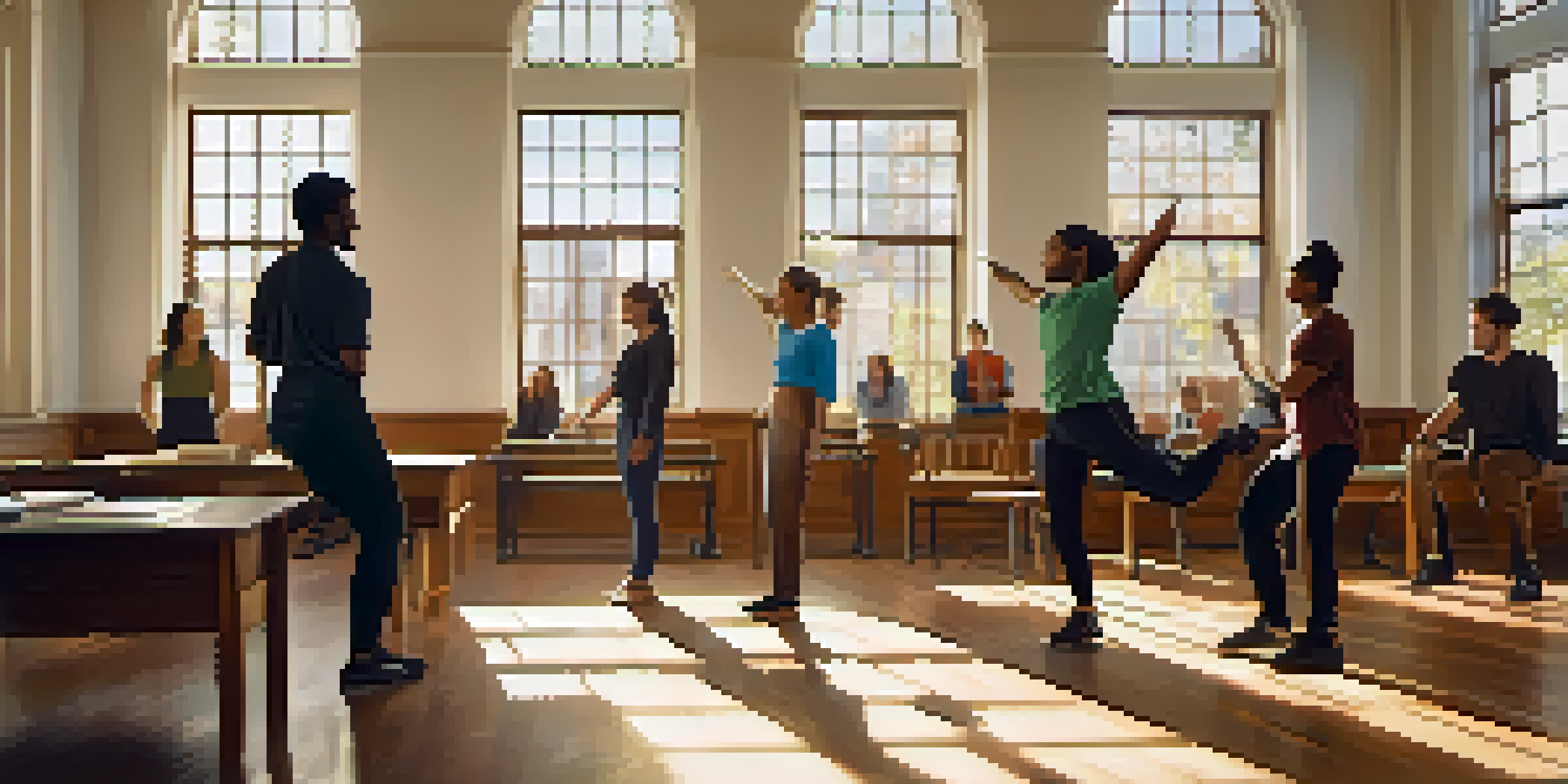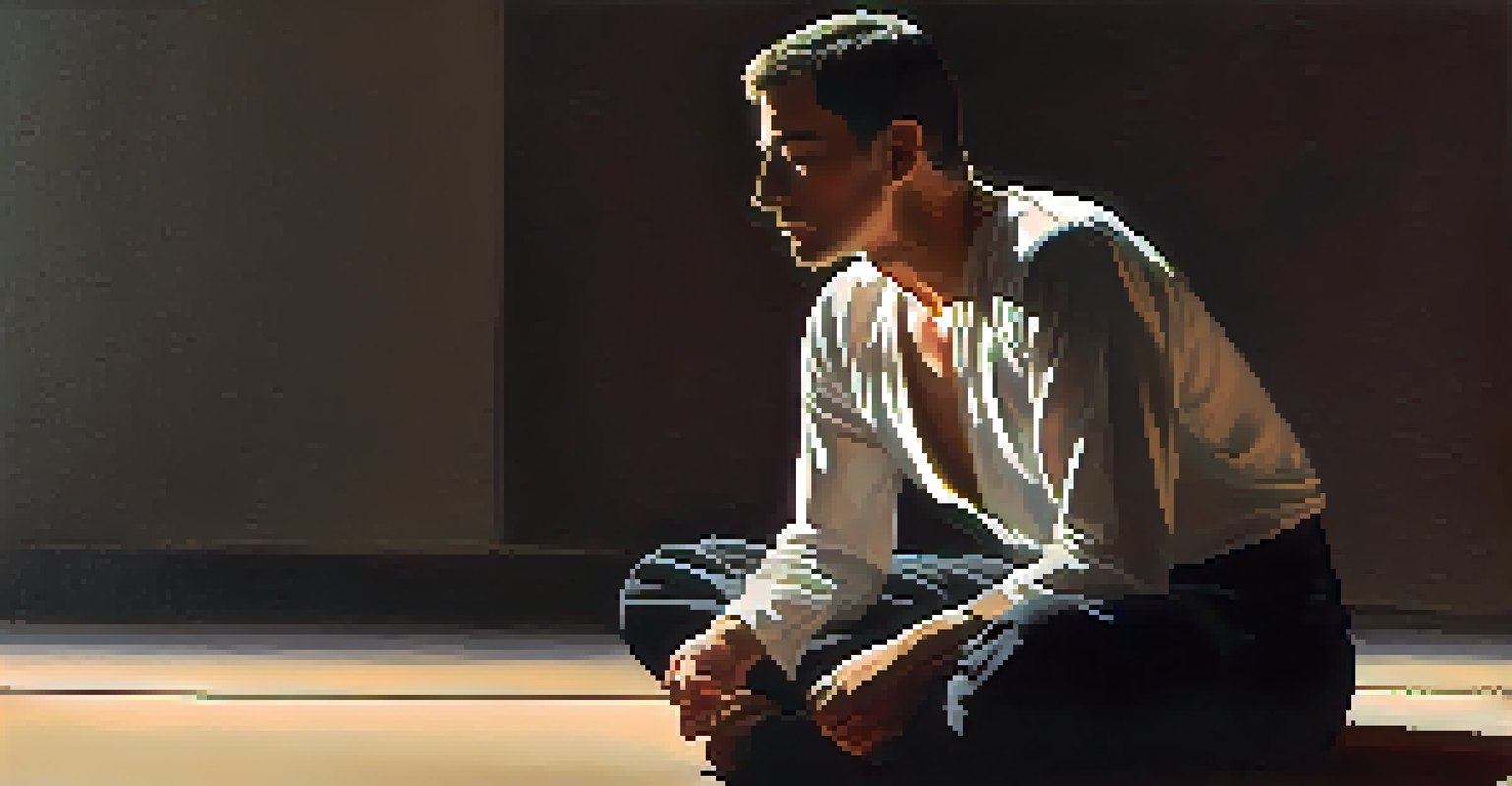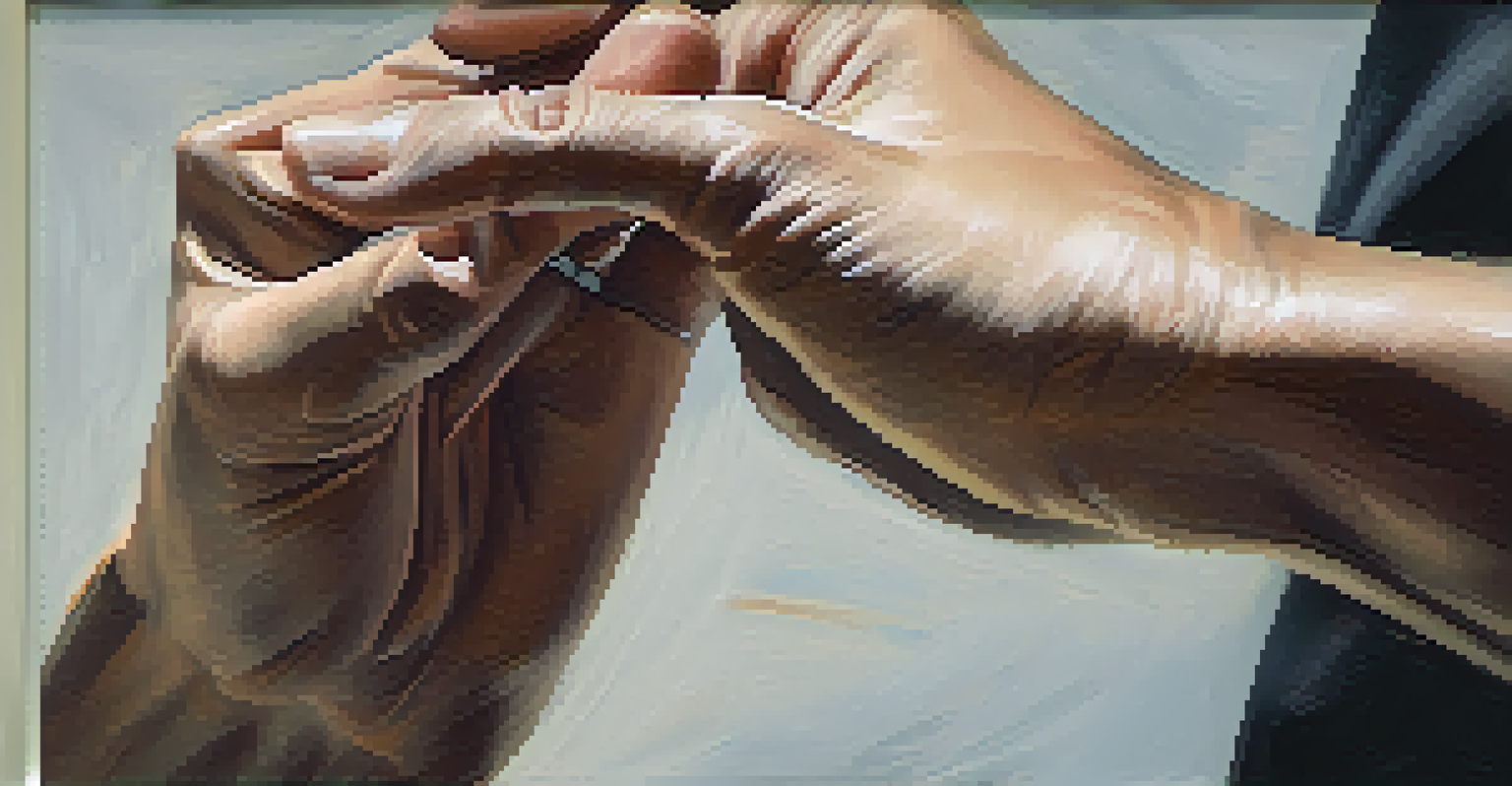The Alexander Technique: Enhancing Actor Movement and Poise

Understanding the Alexander Technique and Its Origins
The Alexander Technique is a method developed in the late 19th century by Australian actor Frederick Matthias Alexander. It focuses on improving movement efficiency and posture, which can be particularly beneficial for performers. By teaching individuals to recognize and change harmful habits, the technique promotes a more balanced and natural way of moving.
The Alexander Technique is a way of learning how to get rid of bad habits that inhibit our natural movement.
At its core, the Alexander Technique encourages awareness of how we use our bodies in everyday activities. This heightened awareness helps actors refine their physical presence on stage, allowing them to convey emotions and intentions more effectively. The technique is not just about acting; it can enhance overall well-being and reduce tension in daily life.
Many actors have found that incorporating the Alexander Technique into their training leads to greater freedom of movement and improved vocal quality. This holistic approach to body awareness helps performers connect more deeply with their characters, making their portrayals more authentic and engaging.
Benefits of the Alexander Technique for Actors
One of the primary benefits of the Alexander Technique for actors is improved posture. Good posture not only enhances physical appearance but also contributes to better vocal projection and clarity. With a properly aligned body, actors can deliver their lines with confidence and presence, drawing the audience into the performance.

Additionally, the technique helps actors reduce performance anxiety by promoting relaxation and focus. As performers learn to identify and release tension, they can approach their roles with greater ease and creativity. This mental clarity allows for a more spontaneous and authentic performance.
Enhancing Movement and Posture
The Alexander Technique improves actors' posture and movement efficiency, leading to better performances.
Moreover, the Alexander Technique fosters greater physical awareness, giving actors the tools to navigate their bodies more effectively. This can lead to enhanced movement quality, enabling them to execute complex choreography or physical comedy with grace and precision.
The Role of Awareness in Actor Training
Awareness is a cornerstone of the Alexander Technique, as it encourages actors to observe their habitual movement patterns. By developing this self-awareness, performers can identify areas of unnecessary tension that may hinder their abilities. This process is akin to tuning an instrument; when actors refine their awareness, they can perform at their best.
Your body is a resource. It is the instrument through which you express yourself, and the more aware you are of it, the more effective you will be.
Through mindful practice, actors learn to differentiate between efficient and inefficient movements. This understanding allows them to make conscious choices about how they express themselves physically on stage. For instance, a subtle shift in posture can convey a character's emotional state or intentions, enriching the storytelling experience.
Ultimately, heightened awareness leads to a deeper connection with both the character and the audience. Actors become more attuned to their surroundings and the reactions of their audience, which can elevate the overall performance to new heights.
Integrating the Alexander Technique into Acting Classes
Many acting schools are now incorporating the Alexander Technique into their curriculum to enhance their students' training. By integrating this technique, instructors can help students develop a strong foundation in movement and body awareness. This not only benefits their acting but also promotes lifelong skills in physical well-being.
Classes often involve practical exercises that focus on breathing, alignment, and movement. Students learn to apply these principles to their performances, making their portrayals more nuanced and impactful. This hands-on approach allows for immediate feedback, helping students refine their technique in real-time.
Reducing Performance Anxiety
This technique promotes relaxation and focus, helping actors manage anxiety and enhance creativity during performances.
Moreover, the collaborative nature of acting classes creates a supportive environment where students can experiment and grow. With the guidance of skilled instructors, they can explore the connections between mind and body, leading to transformative insights that enhance their artistry.
The Connection Between Movement and Character Development
Actors often embody their characters through physical movement, which can reveal a character's personality and emotional state. The Alexander Technique encourages performers to explore how their bodies reflect their characters' traits. For instance, a character who is confident may stand tall and move with purpose, while a more timid character may exhibit closed-off body language.
By understanding the relationship between movement and character, actors can create more authentic portrayals. The technique helps them access different physicalities, allowing for a richer exploration of their roles. This can lead to performances that resonate deeply with audiences, making the characters feel real and relatable.
Ultimately, the Alexander Technique provides actors with the tools to embody their characters fully. By refining their movement, they can bring greater depth and complexity to their performances, captivating audiences and leaving a lasting impression.
Real-Life Success Stories: Actors Using the Technique
Many renowned actors have credited the Alexander Technique with transforming their careers. For example, actors like Sir Ian McKellen and F. Murray Abraham have spoken about how the technique helped them manage stress and improve their craft. Such testimonials highlight the practical benefits of integrating this technique into an actor's training regimen.
These success stories often reveal a common theme: the ability to connect mind and body leads to more profound performances. Actors who practice the Alexander Technique have reported feeling more grounded and present on stage, which allows them to engage more fully with their roles. This connection ultimately enhances their ability to connect with the audience.
Deepening Character Connection
By refining physical awareness, actors can embody their characters more authentically, enriching the storytelling experience.
Moreover, these actors serve as inspirations for aspiring performers, showcasing how the Alexander Technique can be a valuable tool in their artistic journey. By learning from those who have successfully navigated their careers using this approach, new actors can find motivation and guidance in their own paths.
Getting Started with the Alexander Technique
If you're an actor interested in exploring the Alexander Technique, the first step is to find a qualified teacher. Many practitioners offer introductory classes and workshops that provide a solid foundation in the principles of the technique. This initial exposure can help you determine how best to integrate it into your acting practice.
Once you begin your training, consistency is key. Regular practice will help reinforce the principles you've learned and allow you to experience the benefits firsthand. As you become more familiar with the technique, you'll likely notice improvements in your posture, movement, and overall performance.

Finally, be patient with yourself as you embark on this journey. The Alexander Technique is a lifelong practice that evolves over time. Embrace the process, and you'll find that the rewards extend far beyond the stage, enriching both your personal and professional life.